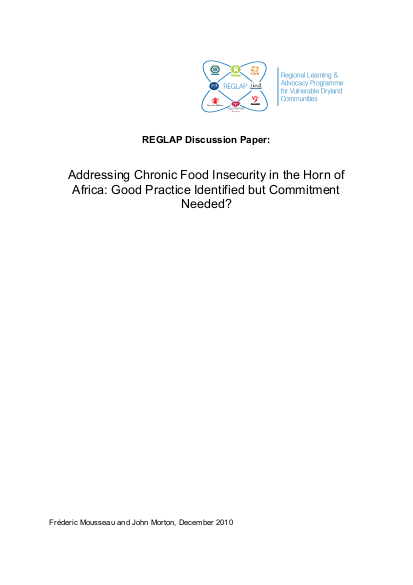
The Horn of Africa has experienced recurrent crises of hunger in recent decades, which have required massive relief operations. The region is also confronted with high endemic or seasonal levels of food insecurity. In the regional crisis of 2008, 18 million people were declared in need of emergency assistance. This coincided with a global rise in basic food prices, and local price rises which may have been linked. After decades when food insecurity was addressed through relief operations, it has more recently become an important development issue in the eyes of donors and governments. This paper reviews the way in which donor responses to hunger are diversifying and demonstrating innovation, with particular focus on responses to the crisis of 2008. It discusses in turn the context, the new approaches, obstacles to wider adoption of those approaches and ways forward. Important elements of context are the overall increasing levels of Official Development Assistance to the countries of the Horn, emerging new leadership and co-ordination roles for national governments and regional organizations, and the increasing importance of climate change, as an explicit element in donor funding decisions and in planning processes. Promising new approaches to addressing food insecurity have been used, and valuable lessons have been learnt, but in each case there are limitations to the approach itself, and/or the willingness of donors to fully fund and use it. In Ethiopia the Productive Safety Net Programme has shown great achievements in supporting the food insecure, and in making that support less dependent on annual appeals. But this is not to say that it is fully replacing humanitarian assistance. There are questions also about the administrative and financial resources it requires from different stakeholders, the extent to which it is encouraging “graduation” to food security among its clientele, and its resilience to price volatility. Individual donors are successfully implementing Disaster Risk Reduction approaches and other approaches, usually country-specific, to bridging the gap between relief and development. Governments in the region have also set up multi-sectoral institutions to coordinate development. But there is a lack of connections or co-ordination between these efforts, and the large-scale UN humanitarian operations.